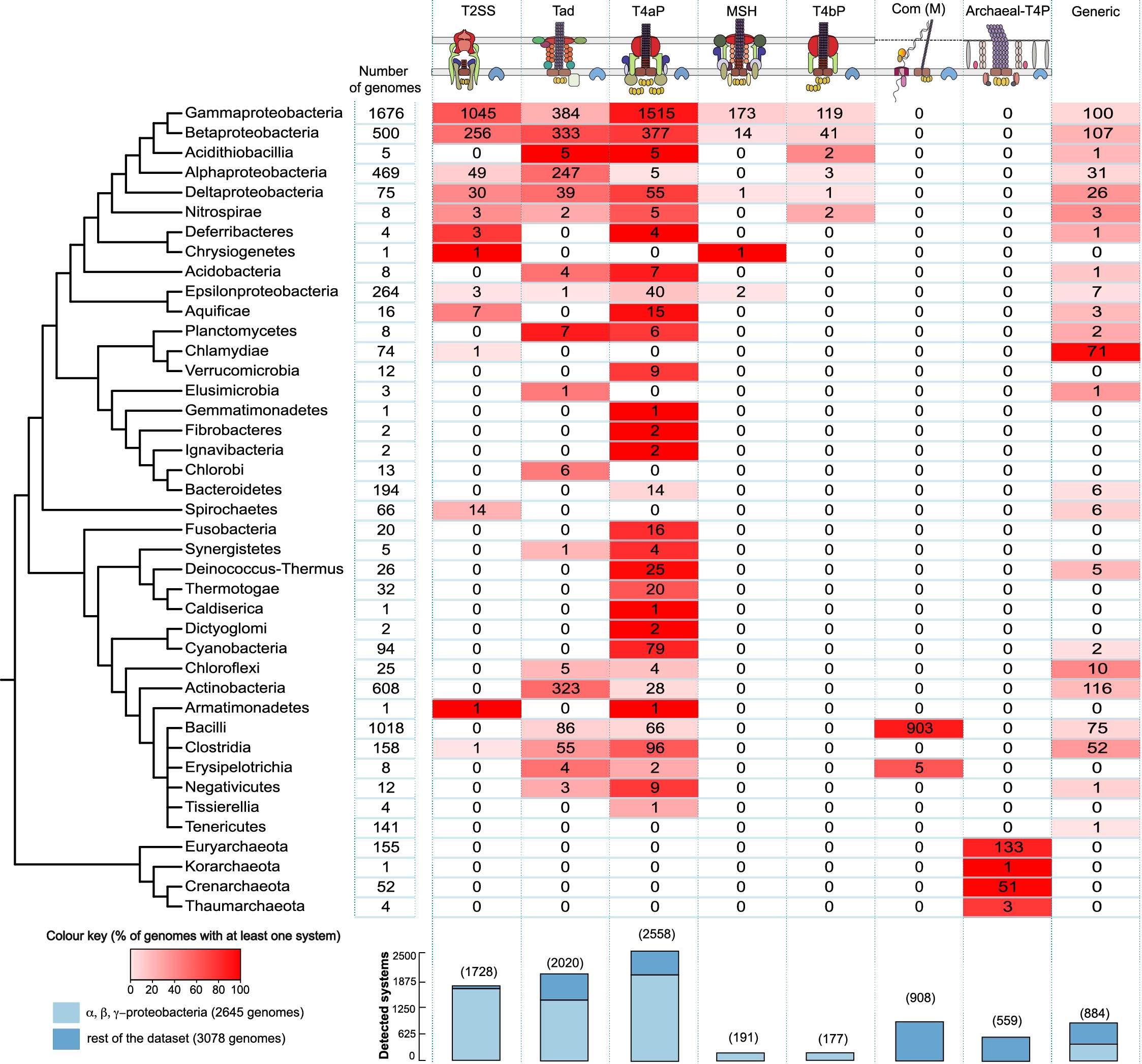Bacterial Secretion Systems
We develop genome annotation tools to detect these systems in publicly available genomes, and then analyse their distribution, and evolution/diversification.

Distribution of the type IV filament super-family across the tree of life. Figure from Denise et al. Plos Biology, 2019.
Protein secretion systems and related cellular appendages, have diversified along the evolution of bacteria, and evolved many different crucial functions, including motility, adhesion to biotic and abiotic surfaces, toxin secretion, and even exogenous DNA integration.
We study the mechanisms that allowed such functional diversification. To this end, we have created dedicated genome annotation tools, namely TXSScan and TFFscan. These annotations tools can be used with the MacSyFinder program.
We investigated the evolution of the Type III secretion system from the bacterial flagellum, the distribution of protein secretion systems across (diderm) baceria, and the diversification of the Type IV filament super-family.
In 2020, we wrote a review article about the different patterns that we and others observed for the evolution of bacterial secretion systems.
Together with Nelle Varoquaux, we are currently working on the use of machine learning to predict novel secretion systems. This project is currently supported by the ANR program agency.

